Learning Piano
Understanding Piano Tablature: A Beginner’s Guide
Understanding Piano Tablature: A Beginner’s Guide
Piano tablature, commonly known as “tab,” offers a straightforward way of notating music using text characters, making it an appealing choice for sharing music digitally, especially among novices. Unlike traditional sheet music, piano tabs specify notes and their respective octaves on the keyboard, simplifying the learning process for new pieces.
Navigating Piano Tabs 
- Organizing the Keyboard by Octaves: Piano tabs are structured as a series of horizontal lines, each tagged with a number representing an octave on the keyboard, beginning from the leftmost C note. For example:
5|------------------------------
4|------------------------------
3|------------------------------
2|------------------------------
Each line corresponds to a specific octave, allowing you to easily locate where each note should be played on the keyboard. The tabs focus on the octaves where the music occurs, eliminating unnecessary lines. 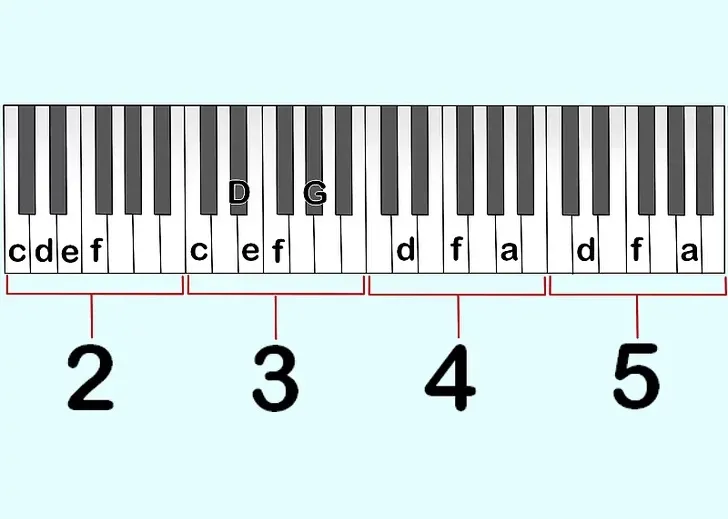
- Identifying Notes on the Tabs: Notes are denoted by the letters A through G across the tab lines:
5|-a-d-f------------------------
4|-a-d-f------------------------
3|-------c-D-e-f-G--------------
2|-----------------f-e-d-c------
Lowercase letters indicate natural notes (white keys), while uppercase letters represent sharps (black keys). Flats are not used in piano tabs; instead, they are represented by their sharp equivalents to simplify notation and avoid confusion. 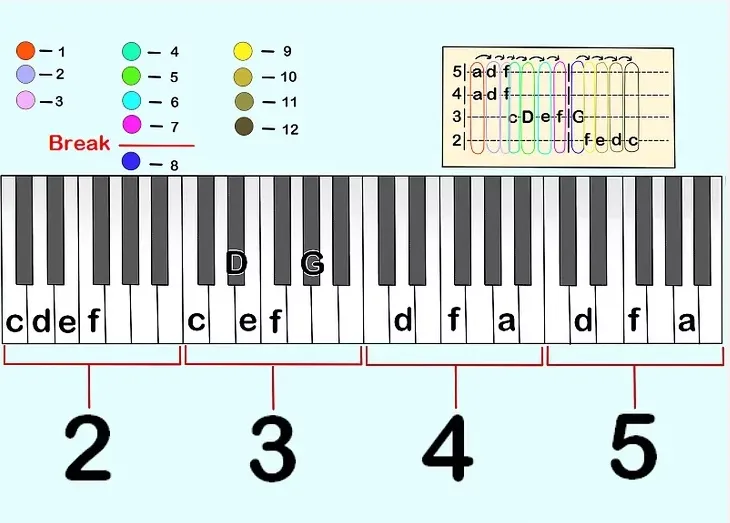
- Reading Tabs Sequentially: Tabs are read from left to right. Vertical lines may be used to denote measures, helping to segment the music similarly to traditional sheet music. Play the notes in sequence, with vertically aligned notes played simultaneously as chords.
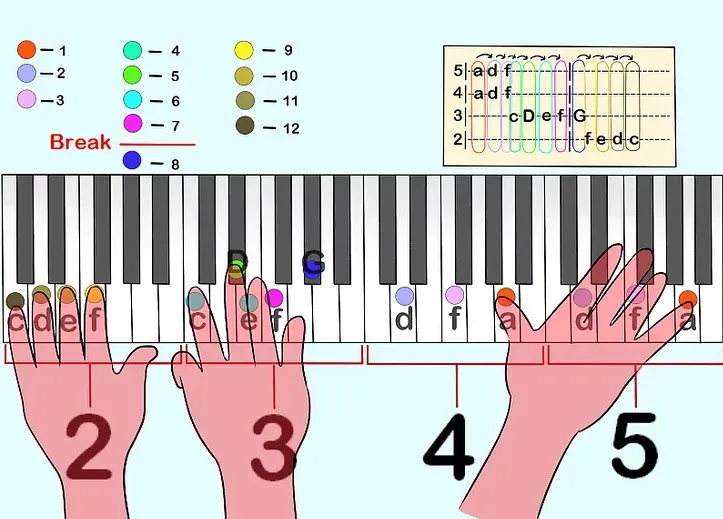
Interpreting Special Notations 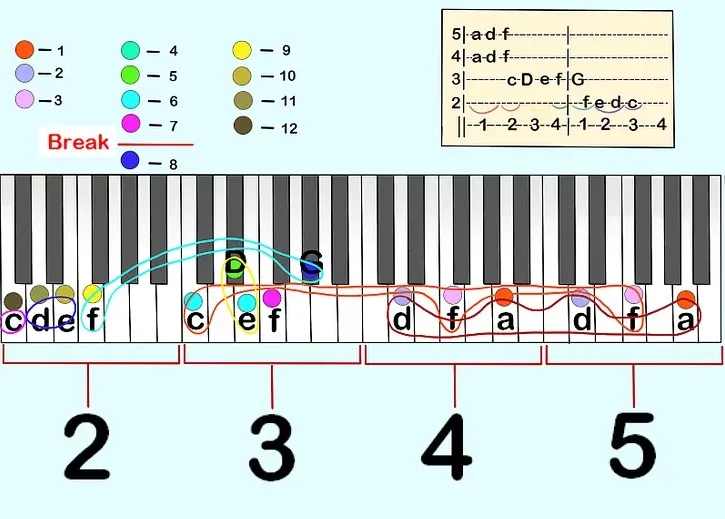
- Beats and Rhythms: Rhythms in tabs can be challenging to convey. Some tabs count beats above or below the lines, with numbers or symbols like “&” indicating off-beats. This system, while not perfect, helps approximate the rhythm within the tab’s limitations.
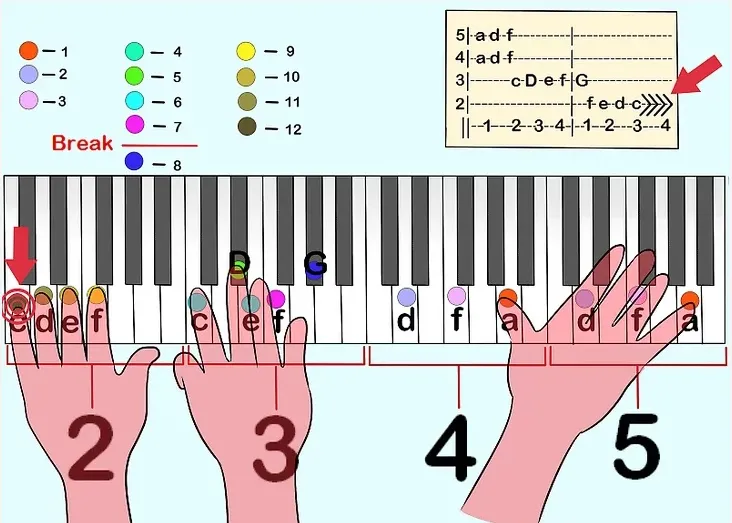
- Rests and Sustains: Tabs might use “>” symbols after notes to indicate sustains, or lack any symbol for rests. Staccato notes, which are played sharply and briefly, may be marked with periods.
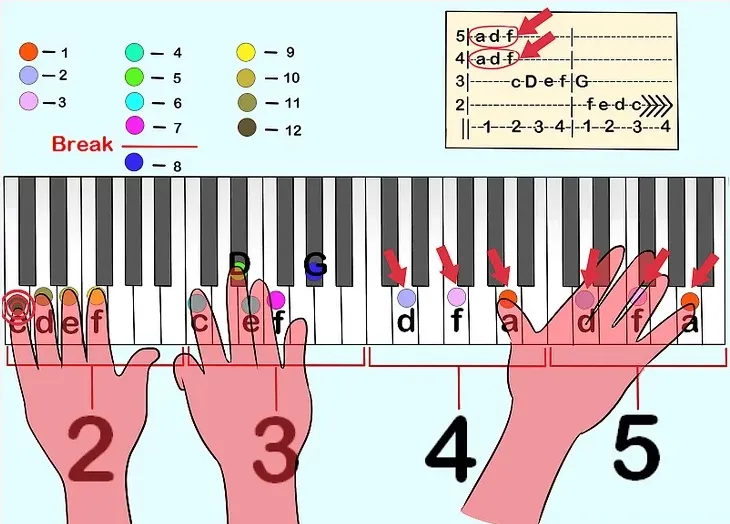
- Hand Indications: Some tabs specify which hand to use for each section by placing an “R” (right hand) or “L” (left hand) before the octave number. This guidance helps in accurately dividing the music between both hands for more complex pieces.
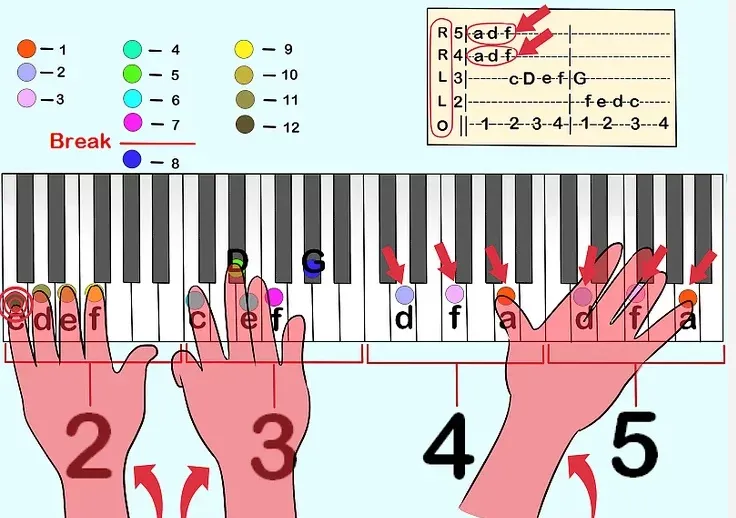
Practical Tips for Playing from Tabs
- Start by familiarizing yourself with the octave layout of your keyboard relative to the tab.
- Practice identifying and playing notes from the tab, gradually incorporating rhythm and hand coordination.
- Use tabs as a tool to explore a wide range of music, building your skills in reading and playing piano music more fluently.
Piano tabs provide a unique and accessible method for learning and sharing music, offering a bridge between beginner pianists and the vast world of musical literature.
